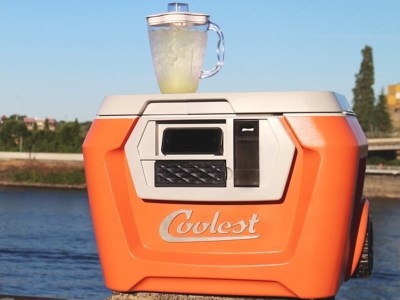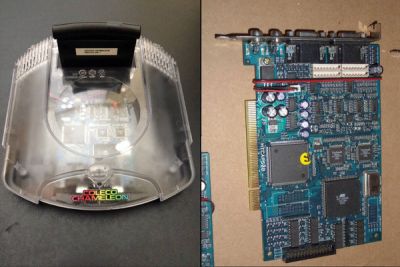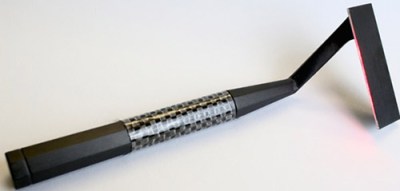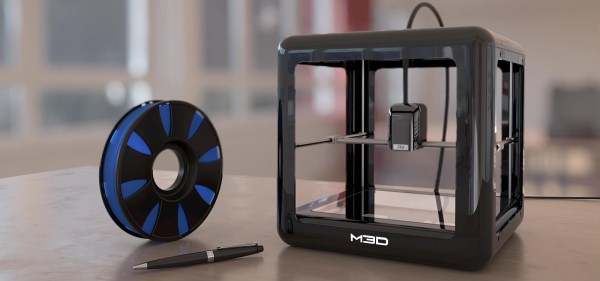M3D just launched their second 3D printer on Kickstarter. The M3D Pro offers more professional features than its predecessor, the M3D Micro, which is still one of cheapest 3D printers around. Despite the higher price of $499, the campaign reached its $100,000 funding goal within hours.
Why Kickstarter Products Fail
It seems every week we report on Kickstarter campaigns that fail in extraordinary fashion. And yet there are templates for their failure; stories that are told and retold. These stereotypical faceplants can be avoided. And they are of course not limited to Kickstarter, but apply to all Crowd Funding platforms. Let me list the many failure modes of crowdfunding a product. Learn from these tropes and maybe we can break out of this cycle of despair.
Failure Out of the Gate
 You don’t hear about these failures, and that’s the point. These are crowd funded projects that launch into the abyss and don’t get any wings through printed word or exposure. They may have a stellar product, an impressive engineering team, and a 100% likelihood of being able to deliver, but the project doesn’t get noticed and it dies. Coolest Cooler, the project that raised $13 million, failed miserably the first time they ran a campaign. It was the second attempt that got traction.
You don’t hear about these failures, and that’s the point. These are crowd funded projects that launch into the abyss and don’t get any wings through printed word or exposure. They may have a stellar product, an impressive engineering team, and a 100% likelihood of being able to deliver, but the project doesn’t get noticed and it dies. Coolest Cooler, the project that raised $13 million, failed miserably the first time they ran a campaign. It was the second attempt that got traction.
The solution is to have a mailing list of interested people are ready to purchase the moment you launch, and share to everyone they know. Reach out to blogs and news organizations a month early with a press package and a pitch catered to their specific audience. Press releases get tossed. Have a good reason why this thing is relevant to their audience. Offer an exclusive to a big news site that is your target market.
Coleco Chameleon Is A Kickstarter Scam
Retro gaming consoles exploded with the introduction of the Raspberry Pi and other similar single-board Linux computers. They all work the same way in that they emulate the original game console hardware with software. The game ROM is then dumped to a file and will play like the original. While this works just fine for the vast majority of us who want to get a dose of nostalgia as we chase the magic 1-up mushroom, gaming purists are not satisfied. They can tell the subtle differences between emulation and real hardware. And this is where our story begins.
Meet the Coleco Chameleon. What appears to be just another run-of-the-mill retro gaming console is not what you think. It has an FPGA core that replicates the actual hardware, to the delight of hardcore retro game  enthusiasts around the world. To get it to the masses, they started an ambitious 2 million US dollar Indiegogo campaign, which has unfortunately come to a screeching halt.
enthusiasts around the world. To get it to the masses, they started an ambitious 2 million US dollar Indiegogo campaign, which has unfortunately come to a screeching halt.
Take a close look at the header image. That blue circuit board in there is nothing but an old PCI TV tuning card. To make matters worse, it also appears that their prototype system which was displayed at the Toy Fair in New York was just the guts of an SNES Jr stuffed into their shell.
This scam is clearly busted. However, the idea of reconstructing old gaming console hardware in an FPGA is a viable proposition, and there is demand for such a device from gaming enthusiasts. We can only hope that the owners of the Coleco Chameleon Kickstarter campaign meant well and slipped up trying to meet demand. If they can make a real piece of hardware, it would be welcomed.
Misleading Tech: Kickstarter, Bomb Sights, And Medical Rejuvinators
Every generation thinks it has unique problems and, I suppose, sometimes it is true. My great-grandfather didn’t have to pick a cell phone plan. However, a lot of things you think are modern problems go back much further than you might think. Consider Kickstarter. Sure, there have been plenty of successful products on Kickstarter. There have also been some misleading duds. I don’t mean the stupid ones like the guy who wants to make a cake or potato salad. I mean the ones that are almost certainly vaporware like the induced dream headgear or the Bluetooth tag with no batteries.
Overpromising and underdelivering is hardly a new problem. In the 30’s The McGregor Rejuvenator promised to reverse aging with magnetism, radio waves, infrared and ultraviolet light. Presumably, this didn’t work. Sometimes products do work, but they don’t live up to their marketing hype. The Segway comes to mind. Despite the hype that it would revolutionize transportation, the scooter is now a vehicle for tourists and mall cops.
One of my favorite examples of an overhyped product comes from World War II: The Norden Bomb Sight. What makes the Norden especially interesting is that even today it has a reputation for being highly accurate. However, if you look into it, the Norden–although a marvel for its day–didn’t always live up to its press.
Continue reading “Misleading Tech: Kickstarter, Bomb Sights, And Medical Rejuvinators”
Fail Of The Week: OpenMV Kickstarter Project Hits Manufacturing Snag
Making stuff is hard, especially when you are making lots of stuff. The OpenMV Cam project knows this, because it has hit a problem while putting together their cheap machine vision module. The problem is with the BGA solder balls that connect the image sensor to the main board.
 We’ve covered this intriguing project before: the aim is to build a small, cheap module that can run image processing algorithms to easily give robots sight. The sensor is a Ball Grid Array (BGA) package, which means there are a grid of small solder balls on the back that form the electrical connections. It seems that some of these solder balls are oxidized, preventing them from melting and fusing properly with the board. This is called a head-in-pillow defect, because the ball behaves like your head when you lie down in bed. Your head squishes the pillow, but doesn’t merge into it. There are 38 balls on the OV26040 image sensor and even a single bad link means a failure.
We’ve covered this intriguing project before: the aim is to build a small, cheap module that can run image processing algorithms to easily give robots sight. The sensor is a Ball Grid Array (BGA) package, which means there are a grid of small solder balls on the back that form the electrical connections. It seems that some of these solder balls are oxidized, preventing them from melting and fusing properly with the board. This is called a head-in-pillow defect, because the ball behaves like your head when you lie down in bed. Your head squishes the pillow, but doesn’t merge into it. There are 38 balls on the OV26040 image sensor and even a single bad link means a failure.
The makers of the project have tried a number of solutions, but it seems that they may have to remake the ball links on the back of each sensor. That’s an expensive process: they say it will cost $7 for each, more than the actual sensor cost initially.
A few people have been posting suggestions in the comments for the project, including using solvents and changing the way the sensors are processed before mounting. We’d like to see them overcome this hurdle. Anybody have any suggestions to quickly and cost effectively move the manufacturing process forward?
Continue reading “Fail Of The Week: OpenMV Kickstarter Project Hits Manufacturing Snag”
Why Starting A Kickstarter Could Kick Your Butt
So you’ve come up with a great idea and now you’re thinking about starting a crowdfunding campaign – and why not, all the cool kids are doing it. Now, let’s say you already have a working prototype, or maybe you even built a small run for friends online. You’ve made 10 here, or 20 there. Sure it took some time, but making 1000, or 10,000 would be so much easier once you get all the orders in, right? Wrong.
Before you even think of setting up something like a Kickstarter, we would like to invite you to have a seat and watch this series of videos covering the things many people don’t know about manufacturing. It’s going to cost you 7 hours of sofa time, but if you’re serious about getting something to production these seven hours will pay in spades. Dragon Innovation has had many notable clients over the years – Pebble, Sphero, Makerbot, to name a few. They help startups find their way through the manufacturing mine-feild, for a fee of course. The founders are former iRobot employees, and have quite a bit of hard fought, yet free knowledge to share.
You’ll learn about how important decisions early on can make huge impacts on the success or failure of a product. There’s quite a bit of raw technical info on injection molding, design for manufacture, testing, pricing and everything under the sun. So do yourself (and everyone else) a favor, and before you click submit on that Kickstarter campaign, sit back and enjoy this free seminar.
We’re really enjoying the manufacturing oriented videos which have been popping up. Just a couple of weeks ago we came across a pair of hardware talks from [Bunnie Huang] that were a pleasure to watch. At 20 minutes this might be a good primer before you take the plunge with the playlist below.
Continue reading “Why Starting A Kickstarter Could Kick Your Butt”
Skarp Laser Razor Kickstarter Suspended, Jumps To Indiegogo
An irritation-free razor that gives a close shave has been a dream for thousands of years. [Gillette] came close, and with multiple blades came even closer, but all razors today are still just sharpened steel dragged across the skin. This is the 21st century, and of course there’s a concept for a laser razor pandering for your moola. We recently covered the Skarp laser razor and its Kickstarter campaign, and today the campaign has been shut down.
The email sent out to all contributors to the Skarp campaign follows:
Hello,
This is a message from Kickstarter’s Integrity team. We’re writing to notify you that the Skarp Laser Razor project has been suspended, and your pledge has been canceled.
After requesting and reviewing additional material from the creator of the project, we’ve concluded that it is in violation of our rule requiring working prototypes of physical products that are offered as rewards. Accordingly, all funding has been stopped and backers will not be charged for their pledges. No further action is required on your part. Suspensions cannot be undone.
We take the integrity of the Kickstarter system very seriously. We only suspend projects when we find evidence that our rules are being violated.
Regards, Kickstarter Integrity Team
It only took eight hours for the Skarp team to relaunch their crowdfunding campaign on Indiegogo. As of this writing, over 900 people (ostensibly from the 20,000 backers of the original Kickstarter campaign) have pledged to the new campaign.
Although we will never know exactly why Kickstarter suspended the original Skarp campaign, the reason given by the Kickstarter Integrity Team points to the lack of a working prototype, one of the requirements for technology campaigns on Kickstarter. Interestingly, Skarp did post a few videos of their razor working. These videos were white balanced poorly enough to look like they were filmed through green cellophane, a technique some have claimed was used to hide the actual mechanism behind the prototype’s method of cutting hair. A few commenters on the Skarp Kickstarter campaign – and here on Hackaday – have guessed the Skarp prototype does not use lasers, but instead a heated length of nichrome wire. While this would burn hair off, the color of the wire would be a dull red when filmed in any normal lighting conditions. It is assumed the poor quality of the Skarp prototype videos is an attempt to hide the fact they do not have a working prototype.

Skarp’s move to Indiegogo has been lauded by some – mostly in the comments section of the Indiegogo campaign – and has been derided on every other forum on the Internet. Indiegogo is commonly seen as the last refuge of crowdfunding scam artist, but there are a few legitimate reasons why a campaign would choose to go to Indiegogo. Kickstarter is not available for campaign founders in all countries, and for some, debiting a card immediately, instead of after the campaign end like Kickstarter does, is a legitimate crowdfunding strategy.
But for a crowdfunding campaign to be suspended on Kickstarter and immediately move to Indiegogo? This almost never ends well. One of the most famous examples, the Anonabox, had its Kickstarter campaign suspended after it was found the creator was simply rebadging an off-the-shelf router. The Anonabox then moved over to Indiegogo where it raised over $80,000. Already the campaign for the Skarp Laser Razor has raised $135,000 USD from Indiegogo, after having its Kickstarter campaign raised over $4 Million. No, Skarp won’t be one of the most successful technology Kickstarter campaigns of all time. We can only hope it won’t be one of Indiegogo’s most successful campaigns.

















